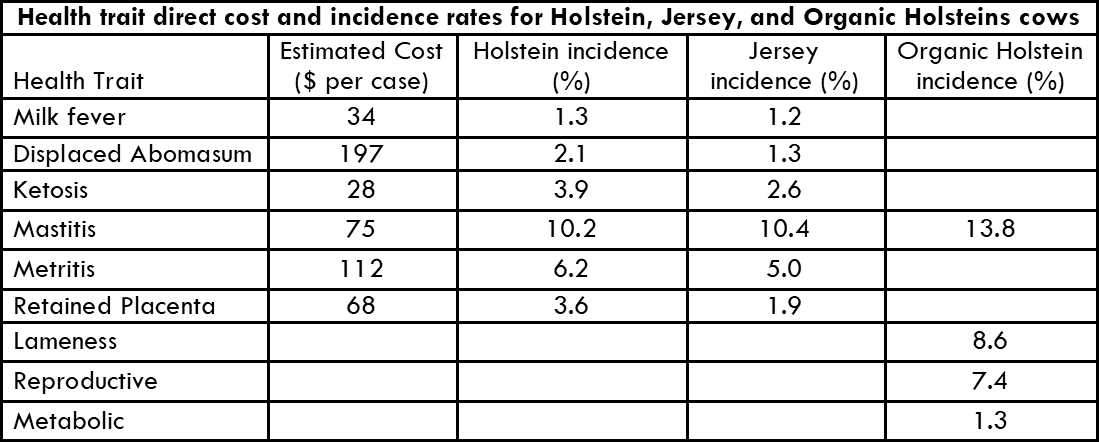June 2021
By Brad Heins, Lydia Hardie, Isaac Haagen, Chad Dechow
Increased selection for milk production has resulted in a decline in cow health and welfare, which can decrease farm profitability. However, the selection for improved health of heifers and cows is of increasing importance to dairy farmers. Health disorders are difficult to evaluate in the US because uniform recording systems for health data are not utilized and the data is often incomplete. National genetic evaluations in the US may lead to improved health in cows on conventional farm, but there is uncertainty in the improvement offered to organic dairy farmers. Organic cows only comprise approximately 3% of the US dairy cow population.
In August 2018, the Council on Dairy Cattle Breeding (CDCB) released evaluations for disease resistance traits and there are incorporated into the Net Merit index. The evaluations are from DHIA herds across the US and evaluations are for displaced abomasum, milk fever, ketosis, mastitis, metritis and retained placenta health traits. The health evaluations are defined as resistance to a disease, and presented as percentage points of resistance above or below the breed average. Favorable values for resistance to the health event will receive positive values. The Jersey breed has had health evaluations from April 2020. The economic impact of the health traits can have large impact on the dairy farm and costs range from $28 for a ketosis case to $197 for a displaced abomasum (see table). Incidence rates for diseases for Holstein and Jersey cows in the US are in the Table. Mastitis has the highest incidence in Holstein and Jersey cows, and other diseases incidence is slightly lower for Jerseys compared to Holsteins.
The Penn State University and the University of Minnesota collaborated on a research project to evaluate health traits of organic dairy cattle. The objectives were to characterize the genetics of health traits and determine the presence of genotype by environment interaction for health traits in US organic dairy cows. We collected cow health data from 16 certified organic dairy farms from across the US for the following traits: lameness, mastitis, metabolic diseases (displaced abomasum, ketosis, and milk fever), and reproductive diseases (abortion, metritis, and retained placenta). Because we did not use a random sample of herds, our reported incidence of disease cannot be assumed as representative of the US organic dairy industry.
The incidence rates of organic cows were generally comparable to what has been reported nationally for the US dairy industry, based primarily on conventional cows. The mastitis incidence (13.8%) was similar to that of national evaluations and was the highest incidence of all health traits. We combined incidences of metabolic (1.3%; ketosis, DA, and milk fever) and reproductive(7.6%; metritis and retained placenta) because of the low occurrence of any one trait. The national genetics evaluations for health do offer genetic improvement for cow health to organic farmers with greatest improvements for mastitis resistance. Albeit small, there is a heritable component to health traits, which should foster their genetic improvement.

